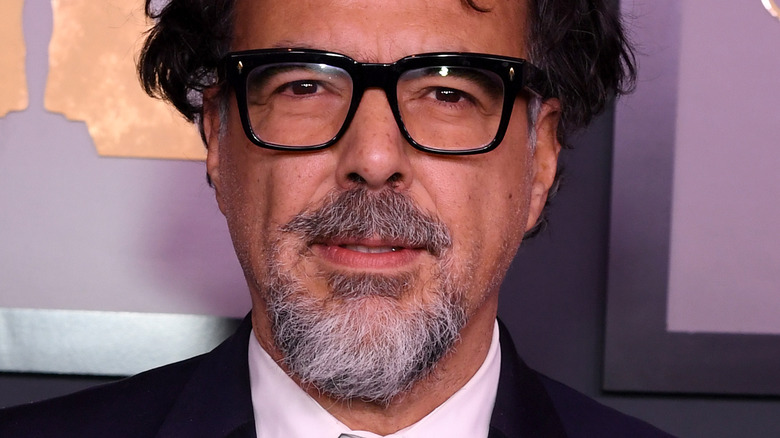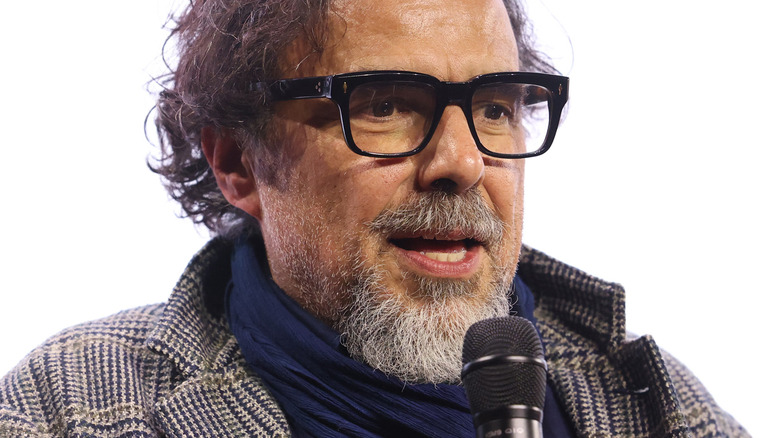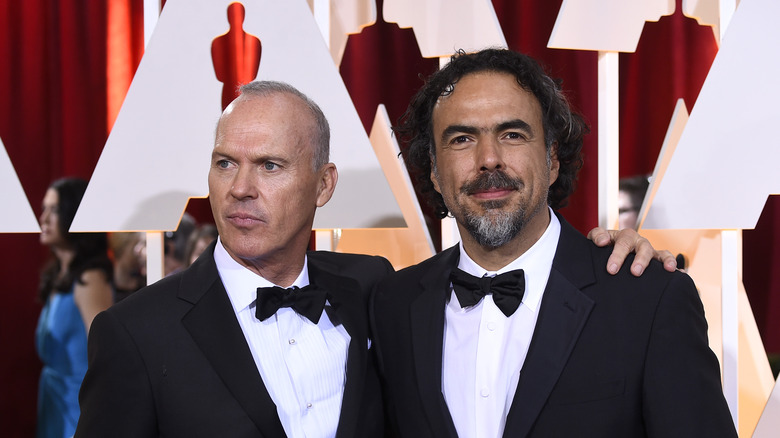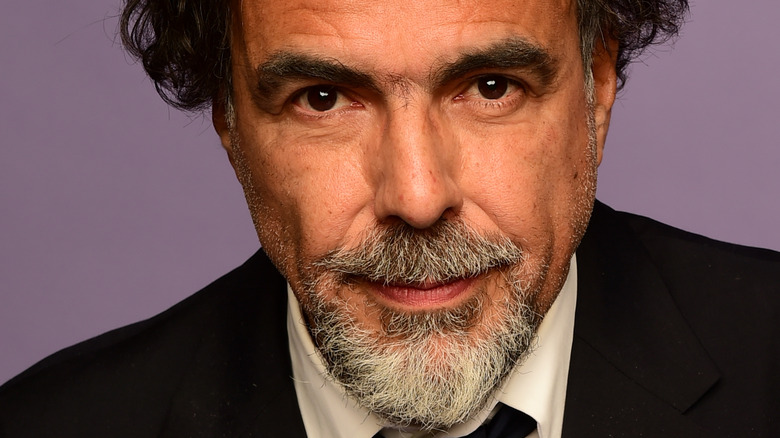Alejandro Iñárritu Talks About Bringing Birdman's Iconic Times Square Scene To Life
Alejandro G. Iñárritu remains a defining force in filmmaking, having first come to the attention of international audiences with 2000's "Amores Perros." The director's frenetic style, long takes, and ambitious approach to music often creates memorable cinematic entries. His newest film, "Bardo: False Chronicle of a Handful of Truths," goes even further to blur the lines between fantasy and reality as its tone harkens back to one of his most talked about projects.
The Michael Keaton-led "Birdman" offered up an introspective approach to facing past decisions and current failures. Critics praised the film, as well as its star, for bringing this dynamic vision of ego and consciousness to life. For instance, Ann Hornaday, writer for The Washington Post, encapsulated what many said upon its release, writing, "the bravura gestures work gorgeously in "Birdman," as does the humor, which playfully balances the film's most mystical, contemplative ideas with a steady stream of inside jokes and well-calibrated shifts in tone and dynamics."
Constructed around an actor's return to the theater, Iñárritu wanted the film to feel like it happened in one take. His intention gave the project a feeling of realism that was only heightened by Emmanuel Lubezki's cinematography and more than a few well-kept secrets. The Oscar-winning director certainly put his creativity to the test with a particular sequence.
A chance encounter shaped a memorable sequence
Everything about "Birdman," even the end, feels like an organic set of moments that the audience is accidentally privy to. The truth is a lot of work went into each second, from the sequence Riggan (Michael Keaton) flies over the city to quiet moments of reflection in the dressing room mirror. Of all the sequences to create conversation, few seem as energetic as that of Riggan's Times Square walk. For some viewers, the sequence itself became a mystery, namely in how the acclaimed filmmaker pulled off something so public without the security that comes with a closed set.
Alejandro G. Iñárritu disclosed how he approached the all-important aspect of Times Square's constant stream of tourists. According to the director, how they approached it came from a need to adapt to limited resources (via GQ). With only enough money for 30 extras and limited amount of time to film, Iñárritu had the daunting task of filming a famous movie star in an extremely vulnerable position. A chance sighting of a drum troupe sparked his imagination. He would use them to create a diversion for most onlookers, giving Keaton a chance to run by without drawing attention.
Times Square proved challenging for the filmmaker
While the crowd was one component to worry about, lighting provided its own challenges. Cinematographer Emmanuel Lubezki had to carefully consider the aspects of shooting in an area full of artificial lighting due to signs and marquees. He finally nailed down a time with Alejandro G. Iñárritu that would best accomplish their goals.
The night of filming saw only a limited amount of crew around the location, with Iñárritu himself keeping his distance for half of the takes. Another take gave the filmmaker a chance to film Keaton's dash through the packed space via a smartphone, and that footage can be seen later as Riggan's daughter (Emma Stone) watches footage of the moment on YouTube. One element he couldn't plan on, though, was what the ads would say at the time of filming, which then meant the legal team had to secure every advertiser's approval (via Variety).
Drums were pivotal to it working
Filming itself was a rigorously rewarding exercise for Alejandro G. Iñárritu, something that would come up at various moments. "You know how sometimes rock bands play the songs during the tour before they record the album?" Iñárritu told The Los Angeles Times. "This wasn't that. We were building it as we were doing it. It was jazz."
The unpredictable nature of jazz might be a great way to describe everything surrounding the Times Square sequence. Iñárritu described hiring the drum troupe as something of an "experiment" (via Yahoo). It came as not only a perfect way to trick the masses, but the technique also came in handy when crafting the soundtrack. The powerful soundtrack by Antonio Sanchez features a rhythm akin to throbbing heartbeats, and the drums are key to capturing the emotional stresses of Riggan's life.
"He thought the drums would give it the comedic rhythm and the anxiety and tension of the situations portrayed in the film," Sanchez said during an NBC interview. The Times Square sequence gave the filmmaker yet another chance to use the drums to portray the turbulence in Riggan's life. To Sanchez, it illustrates the line between whether the moment, among others, is reality or firmly set in the actor's imagination.



